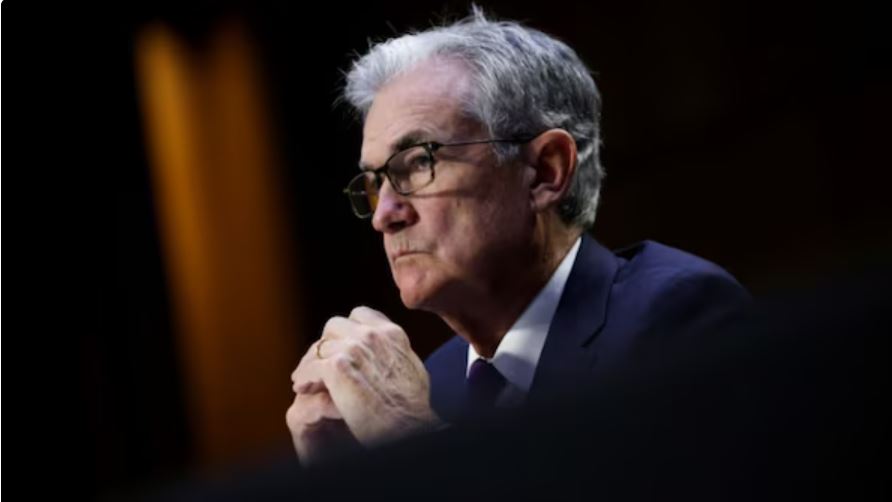The Federal Reserve’s Delicate Balancing Act
As the Federal Reserve edges closer to a pivotal decision on interest rates, the central bank finds itself at a precarious juncture. The impending rate cut in September has sparked a whirlwind of speculation and controversy, positioning the Fed in a challenging political landscape. Historically, central banks have endeavored to remain insulated from partisan influences, but the current climate suggests that any policy adjustments could reverberate through the political sphere with significant consequences.
The Political Implications of a Rate Cut
Federal Reserve officials, under the stewardship of Chairman Jerome Powell, have maintained interest rates at their zenith for over two decades. This steadfast stance has been instrumental in combating inflation, which has recently shown signs of easing. However, as inflation subsides and the labor market cools, the Fed faces mounting pressure to lower borrowing costs. The timing of this potential cut is fraught with political implications, given its proximity to the upcoming presidential election.
The Fed’s decision to cut rates could provoke a backlash from Republicans, particularly former President Donald Trump, who has expressed skepticism about such a move. Trump’s allies have already voiced concerns that a pre-election rate cut could be perceived as a politically motivated maneuver, potentially benefiting Democrats and undermining Trump’s economic messaging. This criticism underscores the perilous position the Fed occupies, balancing economic objectives against political perceptions.
Economic Consequences and Market Reactions
The prospect of a rate cut carries considerable economic weight. Financial markets have priced in expectations of at least two, if not three, rate reductions this year. This anticipation reflects broader economic forecasts and bond investor sentiment. Nonetheless, the exact timing of the Fed’s decision is critical. Should the central bank delay its rate cut, it risks tighter financial conditions and elevated borrowing costs, which could stifle economic growth and consumer sentiment.
For consumers burdened by credit card debt and businesses reliant on short-term borrowing, the delayed rate cut could exacerbate financial strain. Conversely, a timely reduction could stimulate economic activity and improve sentiment, albeit with potential political fallout. The Fed’s challenge is to navigate these complex dynamics while maintaining its commitment to data-driven decision-making.
Political Fallout and Party Reactions
The potential for political fallout from a rate cut is palpable. Republicans, including Trump, have criticized the Fed’s rate-setting decisions, suggesting that a pre-election cut could be perceived as politically motivated. Such criticisms reflect broader concerns about the intersection of monetary policy and political strategy. Trump’s allies argue that a rate cut before the election could provide Democrats with a favorable talking point, undermining Republican critiques of the current economic environment.
Despite these political concerns, some Republicans acknowledge that a post-election rate cut might be acceptable if it aligns with broader economic goals. Marc Sumerlin, a former economic adviser, suggests that Trump could eventually reconcile with the Fed’s decisions if they contribute to a robust economy, even if he initially voices criticism.
Democrats’ Dilemma: Balancing Inflation and Growth
For Democrats, the situation presents a different set of challenges. Vice President Kamala Harris’s campaign could face difficulties if the Fed’s rate-setting policies remain stringent, despite recent inflationary relief. Higher interest rates have made essential purchases, such as homes and vehicles, more expensive, potentially diminishing the perceived benefits of recent economic recovery.
Democratic leaders and former administration officials have argued that a pre-election rate cut could bolster the economy and support a favorable narrative for Harris’s campaign. They contend that maintaining high rates could undermine recovery efforts and exacerbate economic weaknesses. Bharat Ramamurti, a former White House aide, emphasizes the importance of avoiding policy missteps as the economy approaches a critical juncture.
Historical Precedents and the Fed’s Track Record
The Federal Reserve’s history reveals a pattern of policy adjustments close to election periods. Instances such as the rate cuts in July 1992, the rapid rate increases in 2004, and the aggressive rate slashing during the 2008 financial crisis demonstrate the Fed’s tendency to adjust its policies in response to economic conditions, regardless of electoral timing.
Charles Evans, a former Chicago Fed president, reflects on this history, noting that the Fed’s approach has consistently prioritized sound economic policy over political considerations. The challenge for the current Fed is to uphold this tradition while addressing the unique pressures of the present moment.
In conclusion, the Federal Reserve’s anticipated rate cut in September presents a complex interplay of economic necessity and political strategy. As the central bank navigates these turbulent waters, its decisions will undoubtedly shape both economic outcomes and political narratives. The coming weeks will be critical in determining how the Fed balances these competing interests and the broader impact on the upcoming election.

Sunil Garnayak is an expert in Indian news with extensive knowledge of the nation’s political, social, and economic landscape and international relations. With years of experience in journalism, Sunil delivers in-depth analysis and accurate reporting that keeps readers informed about the latest developments in India. His commitment to factual accuracy and nuanced storytelling ensures that his articles provide valuable insights into the country’s most pressing issues.



